Persian Runners & Oriental Runners
Persian Runners and Oriental Runners
A Persian runner is a specific type of Persian rug that is much longer than it is wide. All runner rugs are rectangular in shape but that’s where the similarities end. In some runner rugs, the length may be just a couple of feet longer than the width.
In others, the length is several feet longer than the width, giving the rug a long, narrow appearance. It’s not just the dimensions that vary.
The designs, colors and patterns in every rug is one-of-a-kind, influenced both by the region where it originates from and the individual weaver who created that particular piece. Even the knotting techniques vary.
As with all types of Persian rugs, runner rugs too are completely hand-knotted and use only natural materials. They may be made from various combinations of wool, cotton and silk. The dyes used in these rugs are extracted from various plant parts and other natural materials found in the surrounding area.
8 Popular Types of Persian Runners
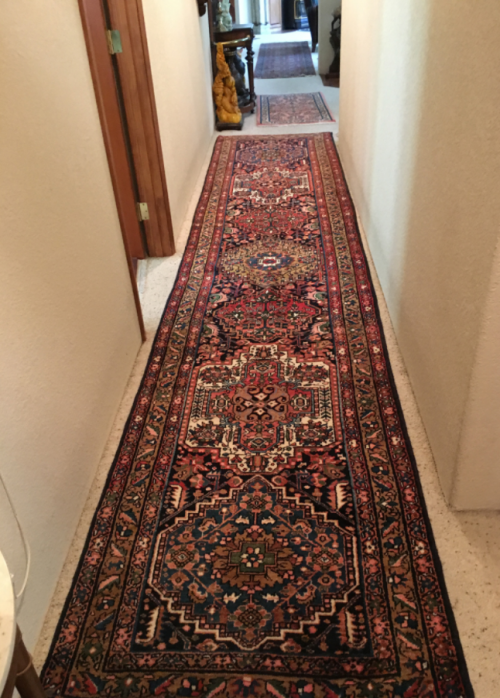
What is an Oriental Runner?
Just like a Persian runner, an Oriental runner is also a type of rug in which the length is much longer than its width.
The dimensions vary considerably with some rugs having a smaller a few feet difference between the length and width and others having several feet difference between the length and width.
Oriental runners originate from several Oriental countries in Asia and the Middle East. Some of the better-known Oriental runners are made in Afghanistan, Turkey, India, Egypt, Tibet, Persia (now known as Iran), China, and Pakistan.
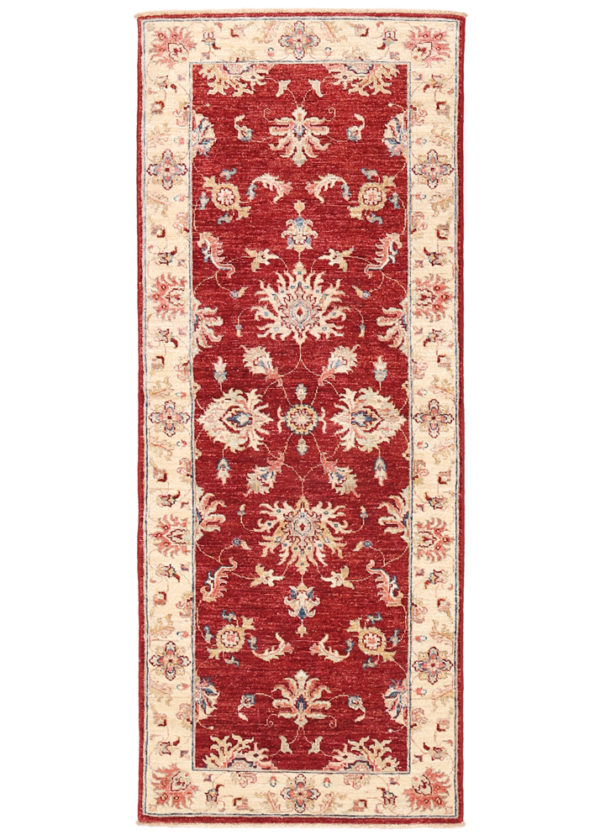
The Key Differences Between Oriental and Persian Rug Runner
This is one of the areas that many first time rug buyers find perplexing – What exactly is the difference between Oriental and Persian runner rugs?
Technically, all Persian rugs are Oriental rugs. Referring to Persian rugs as Oriental rugs is correct. However, the opposite may not hold true. All Oriental rugs are not Persian rugs.
The difference lies in the geographical location that the rug originates from. The Oriental region includes several rug-making countries located in Asia and the Middle East. Persia or Iran is one of these Oriental rug-making countries. Other countries include India, Tibet, Afghanistan, China, Turkey, Pakistan, and Egypt.
Only the runner rugs made in Persia can be called Persian runners or Oriental runners. Runner rugs made in all the other countries are Oriental runners. They cannot be referred to as Persian runners. This is regardless of whether or not they look similar to Persian runners or if they use the same weaving techniques.
There are a few other differences between Oriental and Persian rugs, aside from their origin. One difference is the type of knotting style used in the weaving process.
Persian weavers typically hand-knotted their rugs using the Senneh knot, which is type of asymmetrical knot. Oriental rugs on the other hand are hand-knotted using the Ghiordes knot, which is a type of symmetrical knot.
What’s interesting is that every region in Persia and every region in the Oriental rug-making countries had their own distinctive style. This has resulted in an endless variety of rugs each with their own characteristic patterns, colors, and designs.
Within Persian runners, you can find Tabriz, Nain, Bokhara, Bijar, Malayer and Qum runners among many others from different regions of the country. With Oriental runners, you can find Egyptian, Turkish, Indian, Tibetan, Pakistani, Afghani, and Chinese runner rugs. Each of these is stunning in its own way.
Whether you are looking specifically for a Persian runner or any type of Oriental runner rug, the most difficult thing is choosing just one.
What are the Benefits of Using a Runner
Runners offer a number of interesting and unique benefits in your home.
Instantly transforms any space from drab and dull to colorful and lively – With their good looks, high quality and unusual dimensions, enhancing the overall look and ambiance of the space is one of the more notable benefits of using a runner. Simply placing a runner in a long empty space such as a hallway or a bare floor space in any room will instantly liven up the space and give it some color and character. The transformation is unbelievable and instantaneous.
Protects the flooring underneath – Aside from making the space look more beautiful, a runner rug also helps protect the flooring underneath it. This can make a huge difference in areas with particularly high traffic such as the entryway. Hardwood flooring and other types of hard flooring at the entryway tend to get scuffed and scratched faster because of the dirt and debris that gets trailed in from outside. Getting the flooring fixed can be an expensive and laborious undertaking. Placing a runner rug is a much better and more inexpensive way to protect your flooring while also giving your entryway a more inviting look.
Provides a softer surface to walk on – When you wake up in the morning, putting your feet on cold, hard flooring of your bedroom can jolt you awake abruptly. Placing a runner rug at the side of the bed provides a soft, warm and comfortable space for your feet to land on so you wake up more gently. It’s a much better way to start your day.
Is an affordable way to liven up bare spaces & enhance the overall décor – Purchasing home décor accessories can be expensive. Repairing worn out or cracked flooring can be even more expensive. Whether you are looking to cover your old flooring, protect your new flooring, or add color, warmth and beauty to a space, a runner rug is an affordable solution.
Best Places to Put a Persian and Oriental Runner
Here are a few ideas to inspire you when you are looking for best places to put a Persian or an Oriental runner:
7 Places to Decorate with Runner Rugs
Hallways & Entryways Runners
Hallways and entryways tend to be narrow and long – the ideal dimensions for a runner. These spaces also tend to be drab and dull. The challenge with decorating these spaces however is adding some type of colorful accessory to liven up the space without making it look cluttered.
That’s where a runner rug does what few other décor accessories can do. A colorful runner rug will add brightness, character and comfort underfoot without cluttering up the space.
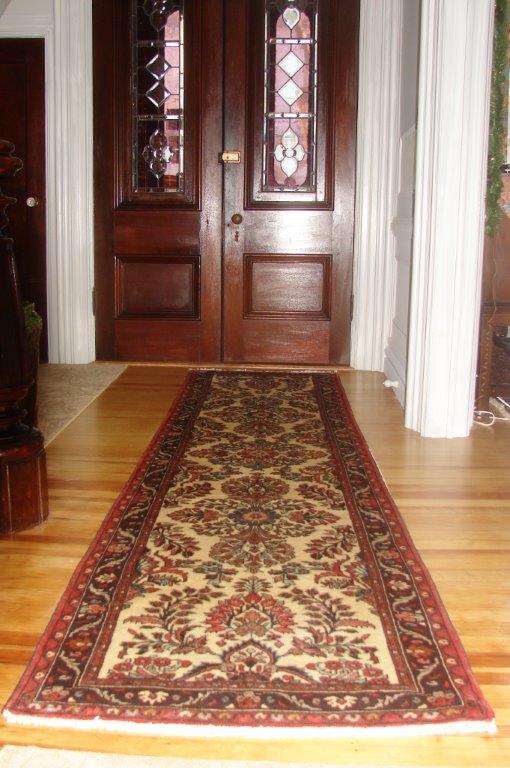
Bedroom Runners
A soft, plush runner placed at the side of your bed will help you wake up more gently as you place your feet on its warm and comfortable surface when you get out of bed. It also adds to the décor of your room.
Depending on the size of your bedroom and placement of your bed, you can add a runner on either side or only one side of the bed.
You can also add a runner at the foot of the bed. This beats placing your bed on one large rug where a large portion of the rug is covered by the bed.
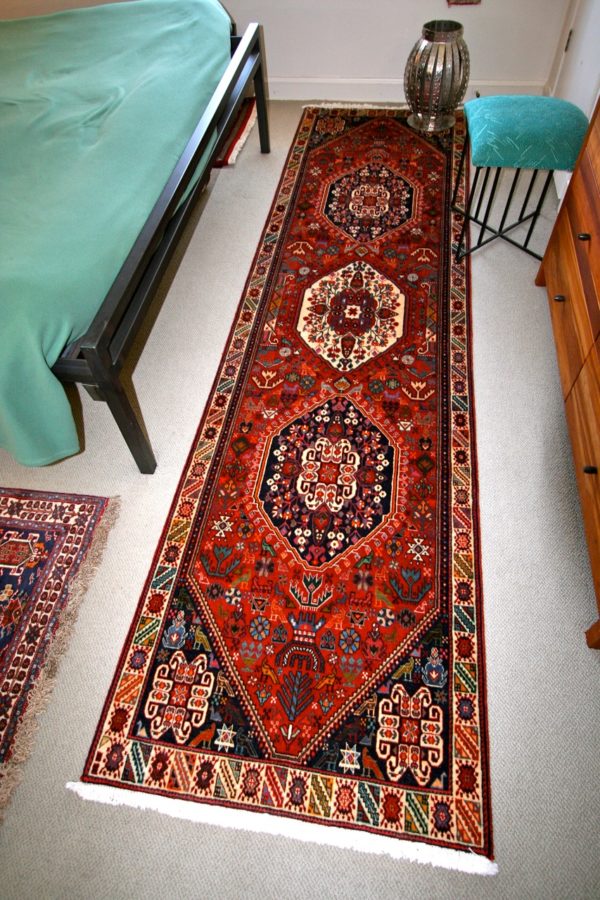
Runners for the Kitchen
Adding a runner over an empty flooring space in the kitchen is an easy and affordable way to add a punch of cheerful color to the room.
Stair Runners
Stair runners are the ultimate combination of form and function. These long gorgeous runners can make any staircase look absolutely regal as they cascade down the steps.
Aside from perking up the look of the staircase, they also add provide more comfort and safety when walking up or down the stairs as compared to the hard, slippery surfaces of hardwood staircases. The most important thing is to make sure your stair runner is installed properly.
It must be secured to the floor surface in such way that it does not come loose or slip off, which can increase the risk of you slipping on the stairs.
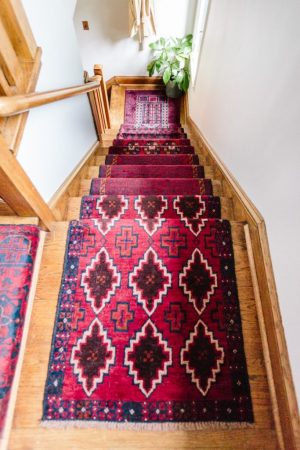
Runner for Heavy Traffic Areas
Placing a runner rug is a great way to protect your hardwood flooring especially in high traffic areas. It’s advisable to look for a dark-colored, robust and durable runner for these areas as they need to be able to withstand the higher wear and tear.
Regular dusting or vacuuming will remove the dirt and debris that inevitable accumulates in the pile. This will prevent the pile from premature damage.
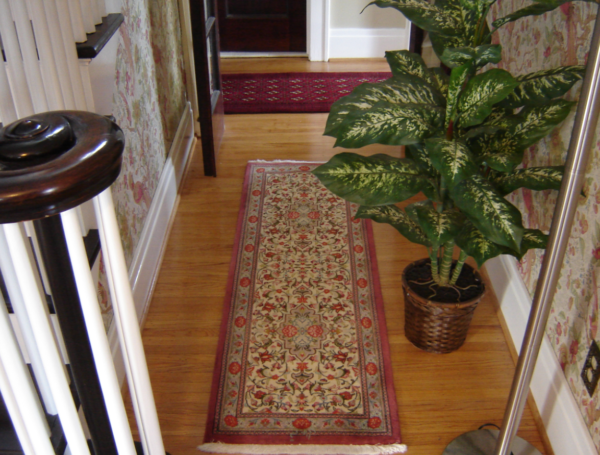
Regardless of where you plan on placing a runner rug, it helps to take some time to consider the size of the space and the existing décor first. You should also take into consideration the ambiance you wish to create in that room. Creating a sophisticated, elegant ambiance will require a different type of runner than a casual, colorful ambiance.
What are the Runner Sizes Available
Runner rugs are available in a wide range of sizes.
Persian runners are available in more diverse dimensions, with sizes ranging from 2 x 7 feet to 7 x 60 feet and everything in between. With this huge range of length and width combinations, you are sure to be able to find a Persian runner for just about any long, narrow space in your home, no matter what the dimensions.
Oriental rugs are more commonly available in widths of about 2 feet to 5 feet with a maximum length of 19 feet. The longer lengths are usually only produced on order.
Related Categories
Hallway Rugs | 6 to 10 ft Runners | 10 to 14 ft Runners | Wide Runners | 15+ ft Runners | Kazak Runner | Antique Runners
Handmade Persian & Oriental Runner Rugs
Accent your space with our unique collection of handmade wool runners. Runner rugs are perfect for stairs and hallways. So if you are searching for a durable, hand-knotted runner to decorate your home, make sure to browse our huge collection of Persian and Oriental wool runners.